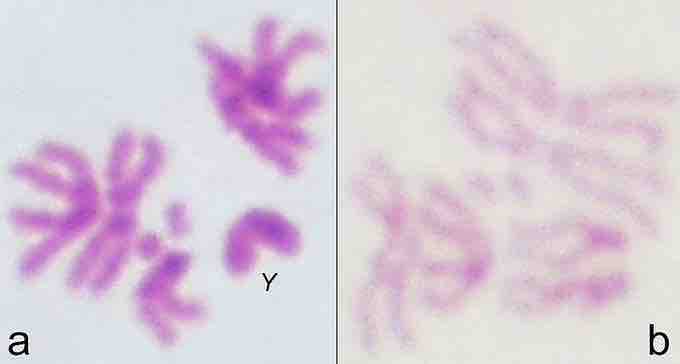Chromosomes are structures in the nucleus of a cell containing DNA, histone protein, and other structural proteins. Chromosomes also contain genes, most of which are made up of DNA and RNA.
DNA, or deoxyribonucleic acid, determines whether our eyes are blue or brown, how tall we will be, and even our preference for certain types of behavior. Known as our "genetic code," it is shaped like a double helix, made of sequences of nucleic acids attached to a sugar phosphate backbone. Genes are subsections of DNA molecules linked together that create a particular characteristic.
Each chromosome is made up of a single DNA molecule coiled around histone proteins. Research dating back to the 1800s shows that every living creature has a specific set of chromosomes in the nucleus of each of its cells.

Human chromosome structure
Chromosomes are made up of a variety of gene sequences. By studying chromosomes and genes, scientists are able to determine the genetic basis for many diseases.
Human chromosomes are divided into two types—autosomes and sex chromosomes. Some genetic traits are linked to a person's sex and therefore passed on by the sex chromosomes. The autosomes contain the remainder of a person's genetic information. All human beings have 23 pairs of chromosomes by which genetic material is developed and characteristically demonstrated; 22 of these are autosomes, while the remaining pair (either XX, female, or XY, male) represents a person's sex chromosomes. These 23 pairs of chromosomes work together to create the person we ultimately become.
Chromosomal abnormalities can occur during fetal development if something goes wrong during the replication of the cells. Common abnormalities include Down syndrome (caused by an extra chromosome #21), Klinefelter syndrome (caused by an extra X chromosome), and Turner syndrome (caused by a missing X chromosome). Genetic counseling is available for families in order to determine if any abnormalities exist that may be passed along to offspring. Many chromosomal abnormalities are of psychological importance, with substantial impacts on mental processes; for example, Down syndrome can cause mild to moderate intellectual disabilities.
As science advances, the ability to manipulate chromosomes is becoming more realized. Cloning is an example of taking chromosomal and genetic material and creating a new animal, and was first successfully achieved in the famous example of Dolly the sheep. There is much controversy surrounding the manipulation of chromosomes in human beings, with many people believing it to be unethical.
Dolly the sheep
The first successfully cloned animal. Chromosomal and genetic manipulation are controversial topics.